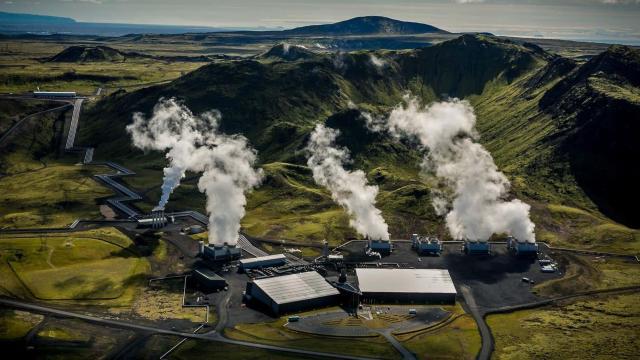Digital payment process platform Stripe has been trying to help make seemingly science fiction a reality through its large-scale carbon purchasing program called Stripe Climate. Now, it’s using another $US6 (A$8) million to pay four companies to capture carbon dioxide from the air and safely store it.
Though there’s still a long way to go to make any of these carbon removal technologies realistic solutions to meaningfully address climate change, Stripe is tapping on the gas with these new investments. It’s doing so as interest rises in how to radical technologies that most research indicates will be necessary to keep global warming to the 1.5-degree-Celsius goal.
The four new companies offer a variety of ways to remove and store carbon. The company 44.01, for example, seeks to convert carbon dioxide into rock, while Ebb Carbon is working on electrochemically removing acid from oceans, a technique that could improve the seas’ abilities to take up more atmospheric carbon dioxide. Eion, meanwhile, uses pulverised minerals to suck in carbon dioxide from the atmosphere. Finally, Sustaera’s tech would capture carbon dioxide directly from the air and store it underground. Stripe said it’s the first customer for three of the four companies.
The payment processor is committing $US2 (A$3) million from this round of funding will go to the companies right away to help bring their technology to market, while the other $US4 (A$6) million will be used in efforts to help them scale. Those funds will bring Stripe’s total purchase commitments up to $US15 (A$21) million since it launched its tool in late 2020.
Stripe established Stripe Climate last year as a way for its customers to set up automatic contributions towards carbon removal companies as a percentage of any user’s transactions. Pooling these funds is meant to do more on the carbon removal front in aggregate than any one company or group would raise on their own. Stripe said 15,000 companies across 40 countries have already contributed through this process. All of this will hopefully make some inroads in bringing the overall cost of carbon removal technology down.
“A lot of the social issues right now are collective action problems,” Nan Ransohoff, Stripe’s Head of Climate, told TechCrunch last year. “Climate change is a collective action problem. Coordinating can be complicated and expensive. So can we make it easy to bring Stripe businesses together to make the whole bigger than the sum of its parts? If we can do it even a little bit, we as a planet, we will be in a better place.”
Stripe’s initiatives help move carbon capture in the right direction but the entire enterprise as a whole suffers from a major problem of scale that can seem insurmountable. According to recent United Nations estimates, hundreds of billions, or even trillions of tons of carbon dioxide will need to be removed from the atmosphere to box in global warming at relatively safe levels. Most researchers have pegged $US100 (A$140) per ton of carbon removed as an ideal price for the technology to be feasible.
To put that in perspective, Climeworks, one of the leaders in the field, can currently capture 4,000 tons of carbon dioxide a year from its world-leading direct-air capture facility in Iceland. That the equivalent of the emissions of around 250 U.S. residents. The cost still sits at around $US1,200 (A$1,685) per ton of carbon removed. At that price, removing even 1 million tons of carbon from the atmosphere would cost more than a billion dollars. Expand that out to potentially a trillion tons and, well, you get the idea. There’s a lot of work to be done.
Still, programs like Stripe’s offer an attractive solution for those looking to find practical ways to create demand for needed technologies using the incentives and tools currently available. Whether or not that will be enough to ultimately move the needle though remains to be seen.
